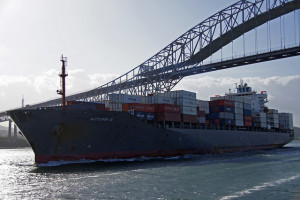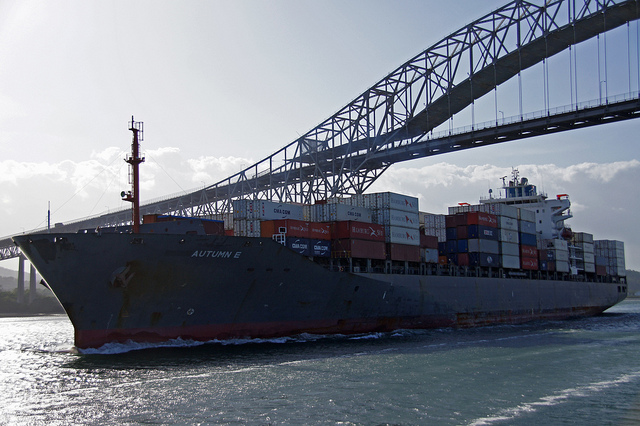 A toxic mixture of overcapacity, weak demand, and a fierce price war is threatening the profitability of the liner shipping industry for the rest of 2015, according to the Container Forecaster report published by global shipping consultancy Drewry.
A toxic mixture of overcapacity, weak demand, and a fierce price war is threatening the profitability of the liner shipping industry for the rest of 2015, according to the Container Forecaster report published by global shipping consultancy Drewry.
Earlier this year Drewry forecast that container shipping carriers would collectively generate profits of up to US$8 billion in 2015, but it has revised its view and now says the industry “will be lucky to break even this year,” forecasting that “some lines will be back in the red by the end of 2015.”
The only way to prevent this is for carriers to take much more radical action to address overcapacity which is now plaguing virtually all major trade routes, especially with the expected continued erosion in freight rates and stabilizing of bunker costs.
Drewry estimates that this year average global freight rates will decline at their fastest pace since 2011, when the fall in industry unit revenue was as great as 10%. The outlook for freight rate has not been helped by second quarter spot rates in the four main East-West headhaul trades falling by 32% year-over-year.
While the consultancy lauded the recent decision by the Ocean 3 lines to remove about 4% of trade capacity on the Asia-North Europe trade, it said void sailings are “only a very temporary solution” and more decisive action is required.
“As many as 129 ships of 8,000 TEUS and above still need to find homes across a number of trades in the second half of 2015,” said Drewry.
The report noted with alarm the simultaneous poor performance of key trade routes that has thrown carriers into “rate-war mode” to protect their market share. “Average global headhaul utilization fell to 83% during the first quarter of 2015, though this alone should not have precipitated the deterioration in spot rates,” it continued.
“However, the perceived weakness pushed many lines into rate-war mode across a number of key trade routes. With the exception of the westbound Transatlantic and Asia to Middle East trades, rarely have we seen so many major routes performing so poorly all at once.”
It added: “Spot freight rates have reached historical lows on the Asia to Europe and Asia to East Coast South America trades, which have been driven by carriers’ fear of losing volume base cargo to competitors as well as impending new build deliveries.”
Each quarter brings another 10 to 15 ULCVs (ultra-large container vessels) into the market and the cascade of tonnage into the trans-Pacific, Latin American, and Asia-Middle East trades is having a genuine detrimental knock-on effect, it said.
Neil Dekker, Drewry’s director of container shipping research said: “There are not enough good homes for ships of over 8,000 TEU where they can be placed without doing some damage to the supply/demand balance. Ocean carriers do not want to idle these expensive assets. The orderbook is starting to get out of control, with another 1.14 million TEU added since January.”
Carriers’ emphasis on ordering so many big ships is starting to backfire and virtually all major headhaul trades are plagued by overcapacity, he observed. “(Carriers) cannot keep adding capacity and expect there to be no substantial impact on unit revenues.”
Photo: Patrick Denker





